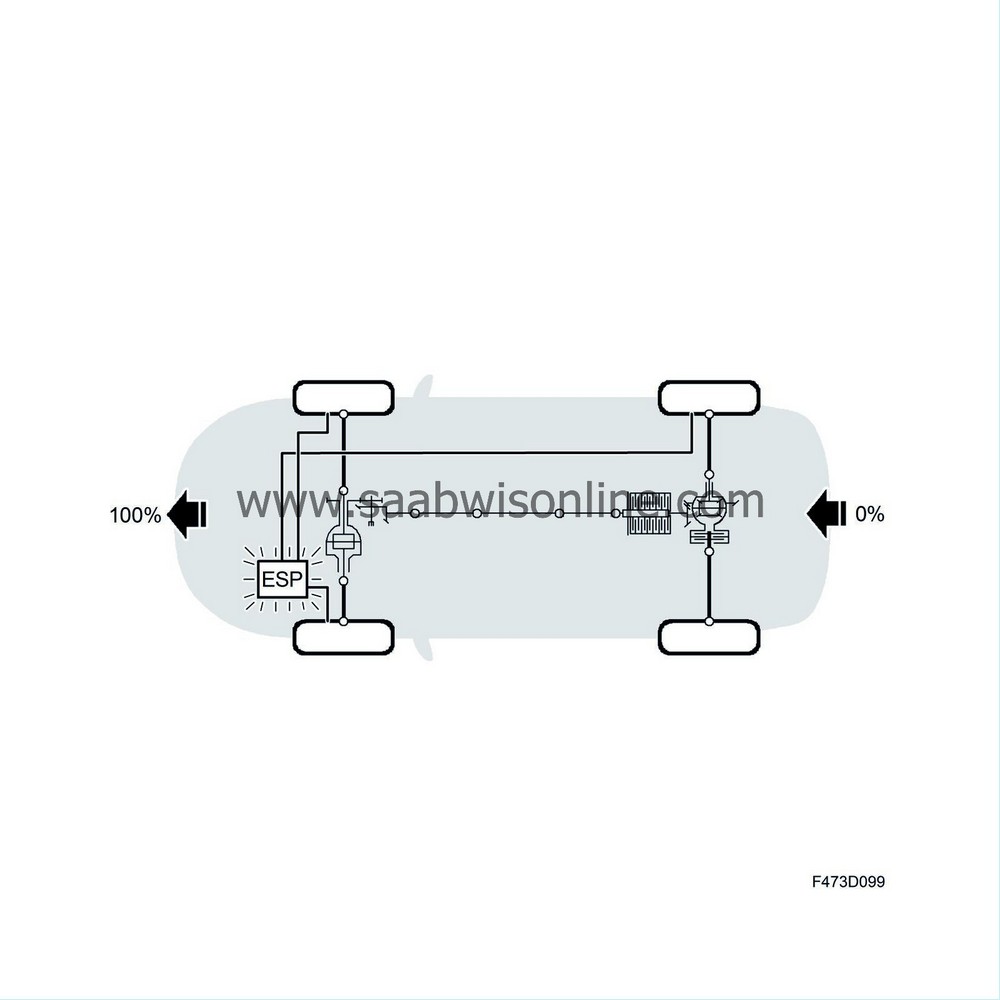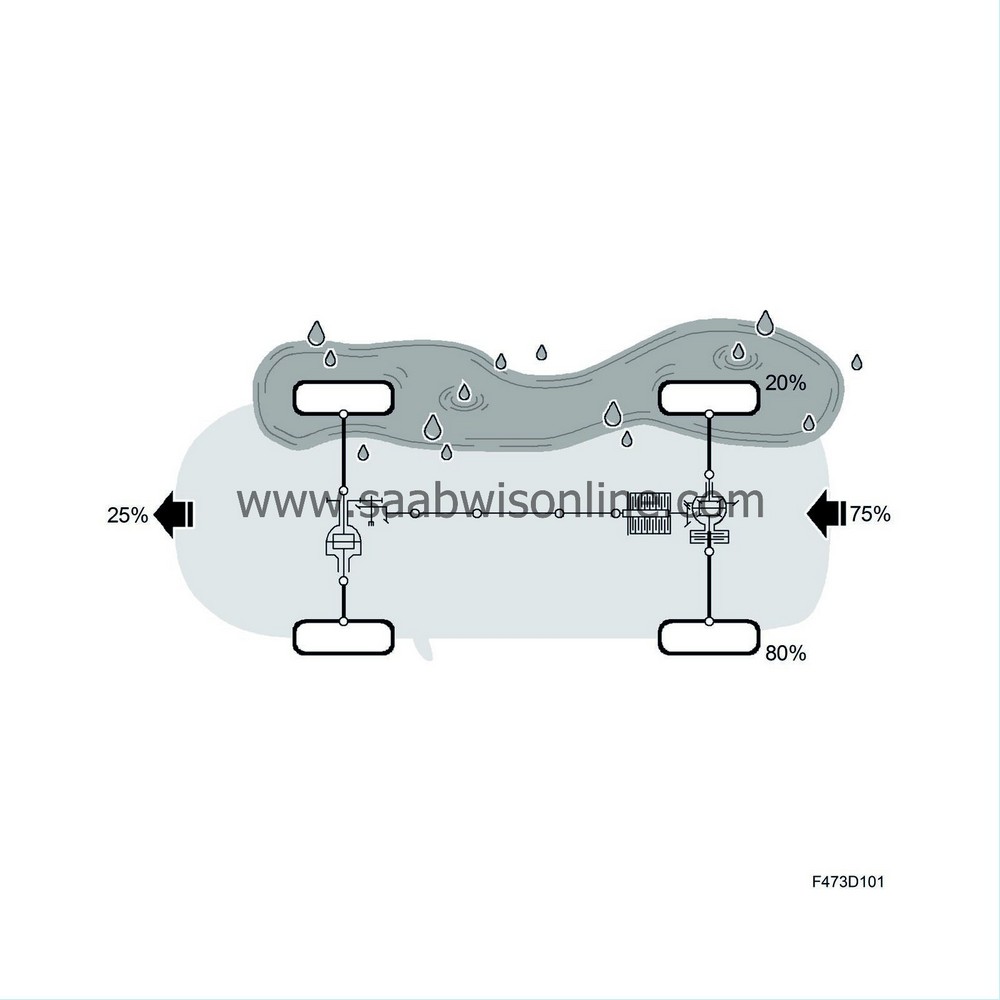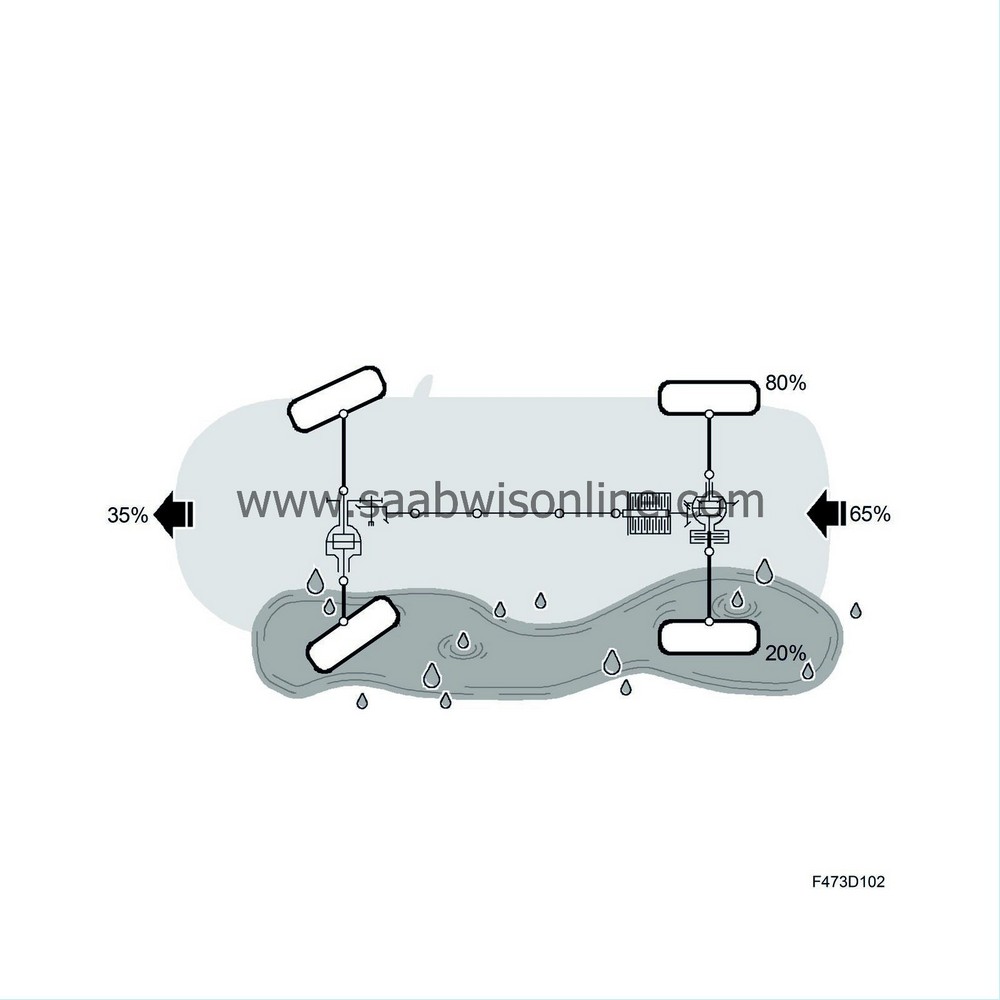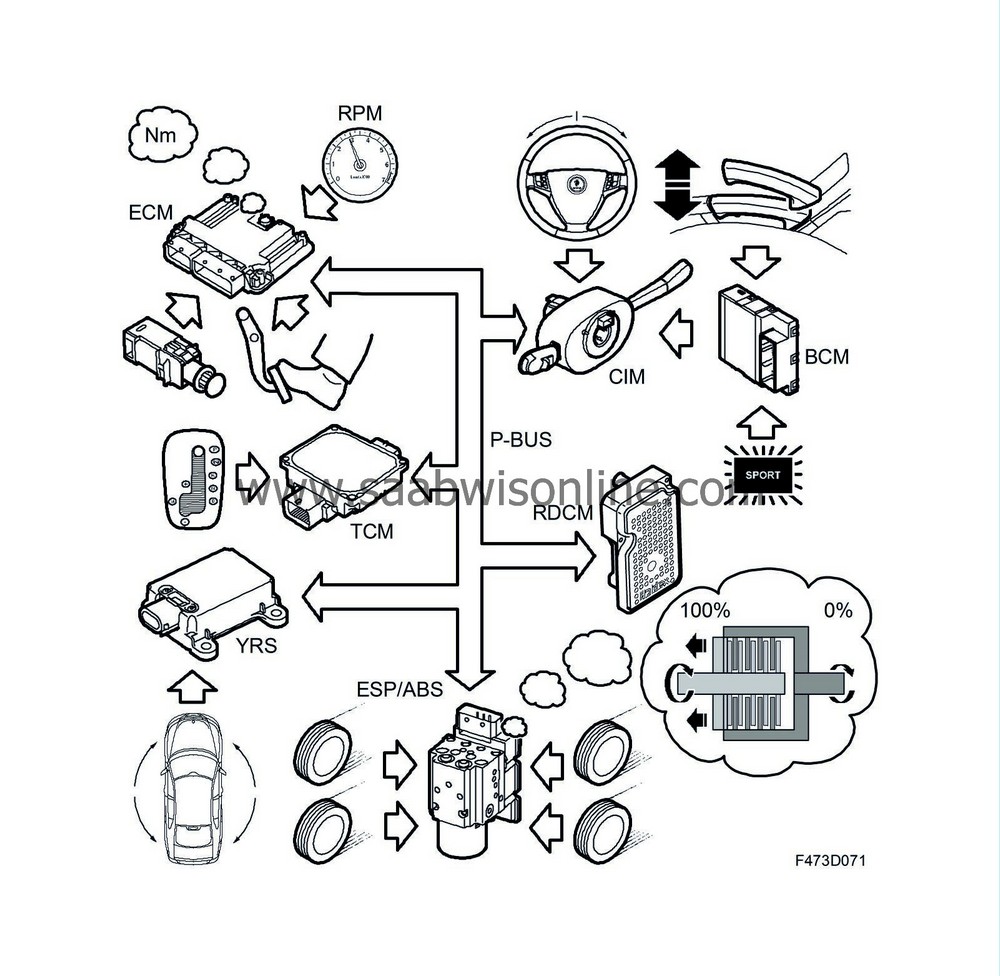Driving
| Driving |
The system optimises the transfer of drive torque between front and rear wheels according to the requirements of the circumstances, providing the driver with improved control. It is controlled by its own electronic control module which works together with the engine, gearbox and ABS/ESP control modules. For the driver, this means maximum traction and strong, even acceleration with unnoticeable shifting of the drive torque between the wheels.
By also using the bus messages on anti-roll and steering angle, oversteer and understeer are balanced, resulting in improved roadholding.
The active limited slip differential clutch uses data from the speed sensors in the rear wheels to distribute up to 80% of the drive torque to the rear axle to the wheel with the best grip.
ESP is a superior XWD system in terms of stability and it takes control, i.e. the XWD function is disengaged, in the event of extreme skidding situations as well as with sudden braking with ABS intervention.
Functions such as handbrake start and handbrake turn work as normal.
| Tyres |
The car's handling characteristics are affected if the condition of the tyres differs considerably between front and rear axle. This applies to all types of car whether or not they are equipped with all-wheel drive.
The XWD control module compensates the torque distribution between the car's front and rear axles if the rolling radius of the wheels differs. This makes the system insensitive to the use of tyres with differing degrees of wear.
If a compact model spare wheel, so-called mini spare, is used then the XWD control module will detect this and disengage rear-wheel drive.
| Typical driving cases without/with limited slip differential clutch |

1. Start - dry road surface
When the car accelerates in first gear the majority of the torque is transferred to the rear wheels.XWD calculates drive torque distribution, i.e. the degree of slipping in the differential clutch, based on the acceleration requested from the ECM.
In the event of hard acceleration more drive torque is transferred to the rear wheels, and less for light acceleration.
More and more drive torque is applied to the front axle as speed increases.
2. Start - low friction for both front wheels (e.g. icy surface)
When the car accelerates from stationary almost all drive torque is transferred by the rear wheels until the front wheels have sufficient traction to take over the drive function.
3. Driving on dry road surface
When the vehicle has gathered speed and is driving at a constant speed the drive torque distribution has changed so that 5-10% is used for the rear wheels.By reducing the drive to the rear wheels the fuel consumption can be reduced. At the same time a certain degree of rear-wheel drive provides enhanced directional stability.

| Braking |
XWD operates in the usual way during normal braking without the ABS function being activated.
If the ABS function engages the differential clutch is opened, so that no brake torque can be transferred between rear and front wheels.

Brake testing
Brake testing with two wheel measuring must only take place with ignition switched off. Brake testing on roads is permitted.| Typical driving cases with limited slip differential clutch |
1. Start with low friction for three wheels (e.g. icy/muddy surface)
If the two front wheels and one rear have low friction (e.g. standing on ice) then the limited slip differential clutch will transfer up to 85% of the drive torque to the rear wheel that has best traction.
2. Driving on wet road surface

When the car reaches a puddle of water (or a patch of ice):
- The differential clutch transfers more drive torque to the rear wheels.
- The limited slip differential clutch transfers higher drive torque to the wheel that has best traction.
3. Overtaking
At constant speed the drive torque distribution is normally 90% front and 10% rear. When the vehicle accelerates the drive torque is changed so that 55% is transferred front and 45% rear in order to obtain improved directional stability for overtaking.When necessary, e.g. in water puddles or sudden manoeuvres, the limited slip differential clutch distributes up to 80% of the rear axle's torque to the rear wheel with the best traction.
When the overtaking has been completed the drive torque distribution returns to 90% front and 10% rear.
4. Cornering on wet road surface

During cornering the drive torque is distributed between the rear and front wheels so that the car does not understeer. The limited slip differential clutch transfers the drive torque to the rear wheel with the best grip on the road. This way safety is enhanced.
If YRS is outside the limit value then ESP requests XWD to open the differential clutch and it takes control itself until stability is achieved. At which point ESP requests that XWD is re-engaged.
| Service |
Towing, one axle raised
During towing when one of the vehicle's axles is raised the speed must not exceed 50 km/h. Follow the laws of the country in question regarding maximum speed in this case. As usual, cars with automatic transmission must not be towed for a distance longer than 50 km.Towing, all wheels rolling
During towing when all of the vehicle's wheels are raised there are no technical limitations. Follow the laws of the country in question regarding maximum speed in this case. As usual, cars with automatic transmission must not be towed for a distance longer than 50 km.Chassis dynamometer
The chassis dynamometer must be the 4-wheel type for output testing.| Important | ||
|
When using the 2-wheel chassis dynamometer the electrical disconnection of the XWD control module does not help, the difference in speed over the clutch would be very high, at which it would be damaged. |
||



